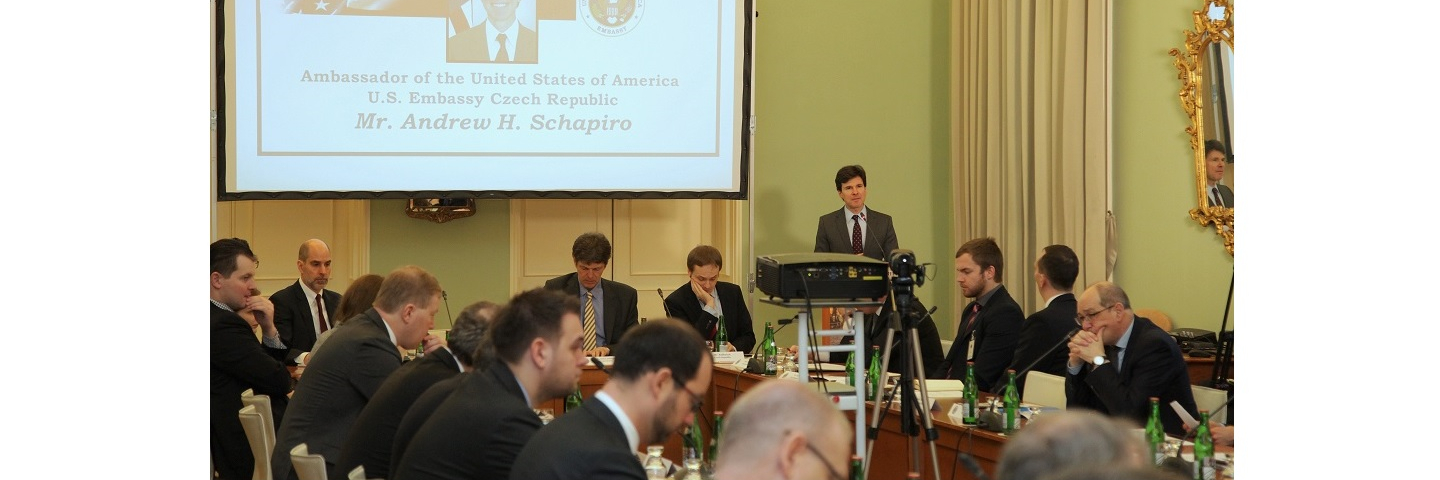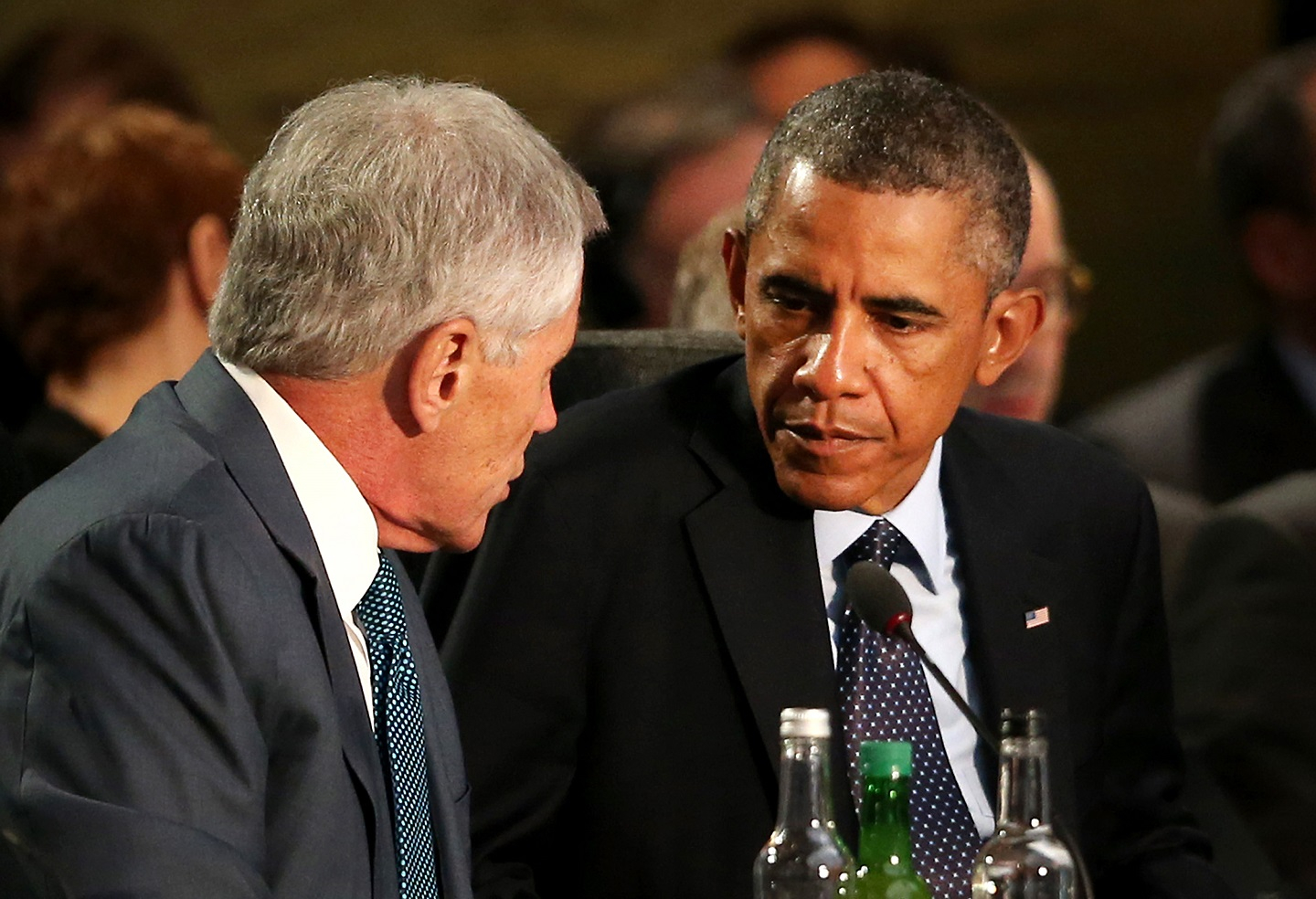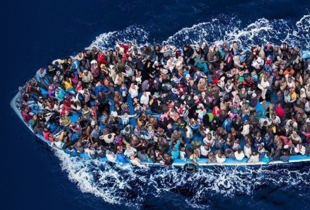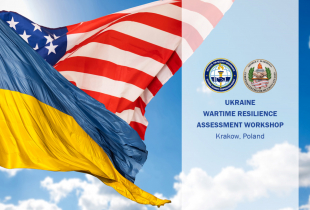
Euro-Atlantic Security: A Pre-Warsaw Assessment
Introduction
The Ministry of Foreign Affairs (MFA) of the Czech Republic, the George C. Marshall European Center for Security Studies, and the Prague Institute for International Relations co-organized an international conference, “Euro-Atlantic Security: A Pre-Warsaw Assessment,” at the MFA in Prague 29 February - 1 March 2016. Over sixty officials and scholars from the Czech Republic, Estonia, France, Germany, Hungary, Latvia, Lithuania, Poland, Slovakia, the United Kingdom, and the United States analyzed their nations’ shared security outlook in the lead up to NATO’s July summit in Warsaw.
This paper draws freely on discussions at the conference in an attempt to capture and extend their major points. The crises of the past two years have accelerated NATO’s political and military adaptation as a twenty-first century alliance. Still, in the face of a fraying international order, a united Euro-Atlantic community must seize the opportunity of Warsaw to transition from reactive coping to more proactive shaping of its security environment.
Still Not Quiet on the Eastern Flank
After years of relative calm, issues of war and peace have returned to the heart of Europe. Russia’s interventions in Crimea and eastern Ukraine since early 2014 have claimed over 9,000 lives and injured or displaced many thousands more. The Minsk II ceasefire agreed in February 2015 continues to be frequently violated and remains politically incomplete. Both sides lack interest or capacity to transform the current impasse. Grinding, low-level fighting appears likely to continue and therefore keep this the latest protracted conflict in the post- Soviet space.
Despite the unifying effects of Russia’s aggression, Ukraine (not yet known as “Ukraine proper”) remains a persistently weak state. Political decentralization would arguably aid both longterm rebuilding and general system functionality, but authorities in Kyiv rightly fear that the “special status” for eastern territories foreseen under Minsk could lead to Bosnia-style gridlock and a de facto Russian veto over Ukrainian foreign policy. Past Russian pledges to respect Ukrainian sovereignty have held little meaning. Outward normalization of conditions in these areas could also end the West’s strongest “Donbass sanctions” against Russia, leaving only the lighter “Crimean” ones in place.
At the same time, actual armed conflict has offered Ukrainian leaders an excuse to delay deeper systemic reforms, including within the security sector. Low public trust in the police, intelligence services, and judiciary highlights the need for further progress here. The army and national guard enjoy higher esteem and have benefited from stepped-up small-unit tactical training from NATO partners. Despite new legislation, however, higher-level changes that would lend these efforts real relevance remain blocked by bureaucratic resistance and entrenched venality in governance. The persistent murky relations among business, crime, and politics fuel popular disenchantment and dissuade energetic members of civil society (including demobilized defense volunteers) from entering into public service.

NEWPORT, WALES - SEPTEMBER 05: US President Barack Obama (R) listens to Defence Secretary Chuck Hagel at the NATO Summit on September 5, 2014 in Newport, Wales. Leaders and senior ministers from around 60 countries are meeting on the final day of the two day summit, with Afghanistan and Ukraine at the top of the agenda.
Fighting ISIS
Meanwhile, even as Ukraine has receded from global headlines, turbulence in Europe’s south has surged to the fore of attention. The bloodiest flashpoint, Syria, has suffered over a quarter million deaths in a five-year civil war and co-hosted the rise of the terror group ISIS (also referred to as Daesh).
At the time of NATO’s Wales Summit in September 2014, ISIS had just captured the Iraqi city Mosul. The U.S.-led Global Coalition of sixty states against the group, whose initial core was announced on the margins of Wales, can claim important progress: since spring 2015 ISIS has won no battlefield victory; lost twenty percent of its territory in Iraq and Syria; seen its estimated number of fighters fall by a quarter; and been forced to halve salaries for remaining combatants and officials due to strikes against its oil and industrial production. Such setbacks diminish the self-described caliphate’s theological claim to authority. Perhaps as partial compensation, however, the group has extended its presence elsewhere from Libya to Afghanistan and mounted or inspired high-casualty attacks in Paris, California, Brussels, and Turkey.
Russia’s deployment of 4,000 troops and four dozen combat aircraft to Syria in fall 2015 made an indirect link with Europe’s eastern flank concerns. Though ostensibly also meant to counter ISIS, Russian airstrikes mainly targeted other anti-Assad rebels and civilians. The operation (and its declared conclusion in March 2016) reflected President Putin’s improvisational pursuit of strategic surprise and appears to have aimed to distract the Russian public from the stalemate in Donbass, discredit the West through attacks on its Syrian partners, and diminish Russia’s pariah status by making it an indispensable partner for crisis resolution. Nonetheless, the highly personalized rift between Putin and Turkey’s President Recep Tayyip Erdogan following the downing of a Russian jet in Turkish airspace in November 2015 has cost Russia another significant economic partner and raised the risk of escalating clashes with a NATO state.
The Great Migration
Russia’s perceived “weaponization” of refugees through its bombing of civilian areas in Syria has in turn extended its connection to Europe’s latest hot-button issue, the influx of two million refugees and migrants to the continent in 2015 and early 2016. With further amplification in the media, the scale and political sensitivities involved have presented a “wicked problem;” the surge has tested humanitarian capacities of even the wealthiest countries and deepened political divisions within and among European states. Actual and potential links to ISIS add a harder security aspect.
Elements of agreement and disagreement coexist on the issue. For example, virtually all governments support the goals of regularizing migration processes, securing external EU/Schengen borders, and addressing root causes such as by ending the fighting in Syria. Proposed strategies for how to achieve those ends diverge sharply, however. Disputes over mandatory EU plans to distribute 160,000 asylum seekers among member states have generated polarizing caricatures of the scheme’s major backer, Germany, as both naive and imperious in forcing through the decision and of opposing Visegrad states as xenophobic and ungrateful for the solidarity shown them in European integration. Notwithstanding NATO’s own new limited role in patrolling the eastern Mediterranean for refugee smugglers, the resulting mutual blame game could threaten momentum for enhanced collective action in the East.
Warsaw and Beyond
These developments have created the background against which allies are finalizing preparations for Warsaw. A minimalist approach would focus on taking stock of commitments from NATO’s last summit in Wales. The marquee outcome there, the Readiness Action Plan (RAP), promoted immediate “assurance” for exposed Eastern allies through means such as increased Baltic Air Policing and multinational exercises as well as longer-term “adaptation” to make the alliance more capable of rapid action through steps such as revitalizing the NATO Response Force. The corollary Defense Investment Pledge aims to raise funding to needed levels over the coming decade.
In addition to the new challenges from the south, however, Russia’s unchanged confrontational approach calls for further steps, if not a paradigm shift, beyond the Wales measures. Of particular concern are Russia’s Cold War-style military provocations and build-up of anti-access, area-denial (A2/AD) assets around the Baltic, Black, and eastern Mediterranean Seas. The former raise the risk of escalation through accidents or miscalculation, while the latter could negate the reinforcement strategy underlying the RAP. Both suggest that the rapid return to partnership with Russia that many allies still hoped for at Wales has vanished as an option. In meteorological terms, this is a matter of climate change rather than a passing storm front.
Accordingly, moving beyond reassurance toward genuinely credible deterrence and defense presents the central task at Warsaw. This needs first to include refinement of the “enhanced forward presence” agreed at NATO’s Defense Ministerial in February 2016. It is perhaps secondary whether this is labeled “permanent” (as desired by Poland and the Baltic states) or simply “persistent” (as more acceptable in some West European allies’ reading of the 1997 NATO-Russia Founding Act). More important is that bolstered deterrence and defense entail critical masses of prepositioned heavy equipment and of forces that are broadly multinational (including nuclear powers), truly combat-skilled, and deployed to appropriate locations (also east of the Vistula) to deter even limited incursions into NATO territory.
This presence should be complemented by improved capacity for reinforcement. It would be neither feasible nor wise to concentrate top-line forces along all of NATO’s contemporary eastern frontier, which is several times longer than the Cold-War inter-German border. Part of efforts here then must focus on developing—or redeveloping—capabilities to operate within more challenging A2/AD environments than NATO forces have faced in their crisis management missions of the past quarter century. Related requirements include streamlined legislative permissions for Allied troop movements, upgrades to roads and bridges to support heavy vehicles, and identification or training of civilian as well as military personnel with critical logistical know-how; German Railways, for example, has drawn up a list of pensioners who managed materiel transport during the Cold War.
A third element will be increased attention to defense capacity building and resilience. Some of this will be for other allies, especially in the East, and will be a peacetime function of rotational forces in those countries. However, to avoid a “fortress mentality,” this should be matched by cooperative work with partners to both the south and east. Learning from the mixed record of past NATO and U.S. efforts in places like Afghanistan and Iraq as well as strengthening cooperation with the European Union in these fields will be critical to success.
Without overburdening the summit in Warsaw itself, these types of steps can lay the groundwork for deeper thinking about long-term Euro-Atlantic strategy vis-à-vis Russia. In addition to scenarios of intensifying military threat, such a process should also consider the potential implications of a disintegrating Russia that misses another decade of political and economic modernization. Both possibilities could be included in a related fresh look at nuclear issues within NATO, keeping in mind that deterring a declining power could prove more difficult than a stable or rising one.
The Role of Central Europe
The viewpoints and commitments of the United States and large West European states will do much to shape NATO’s achievements at Warsaw. The U.S. presidential campaign and “Brexit” referendum in June are also injecting political drama. Nonetheless, in addition to Poland’s role as host, as the most directly affected group of allies, Central European countries can also influence the summit’s results.
Most importantly, the region can avoid presenting itself as simply a collection of needy, demanding security consumers. A basic step would be for those countries that are still spending well below the NATO targets of two percent of GDP for defense and twenty percent of defense spending for modernization to follow Estonia and Poland in doing so. They could also contribute to strengthened NATO forward presence by, for example, the muted idea of a joint Visegrad component within the new rotational battalions in the Baltic states. Finally, regional leaders can acknowledge other allies’ southern flank concerns as well as continue to contribute troops to more distant international missions.
Conclusion
The Warsaw Summit comes at a time of deep, serial challenges to the Euro-Atlantic community and may represent an inflection point in its response. In general, NATO has tended toward rather tactical adjustments rather than a robust long-term strategy. Alliance members have struggled to reach consensus on the main security challenges, on which of those present the greatest security risk, and on how to advance relations with aspirants and partners.
In a hopeful sign, however, policy insiders in Brussels and national capitals are more calmly optimistic about Warsaw’s results than many outside analysts. On the other hand, new developments either internal or external to NATO could still derail positive outcomes. Even the “break-through summit” promised by some officials will require further unity and political will to translate its decisions into practice.
For Academic Citation
Matthew Rhodes and Michal Kořan, “Euro-Atlantic Security: A Pre-Warsaw Assessment,” Marshall Center Security Insight, no. 14, June 2010, https://www.marshallcenter.org/en/publications/security-insights/euro-atlantic-security-pre-warsaw-assessment-0.
About the Authors
Dr. Matthew Rhodes is the Director of Programs in Central and Southeast Europe at the George C. Marshall European Center for Security Studies in Garmisch-Partenkirchen, Germany.
Dr. Michal Kořan is a Researcher at the Institute of International Relations,Prague and an Assistant Professor in the Department of International Relations and European Studies at Masaryk University, Brno.
The Marshall Center Security Insights
The George C. Marshall European Center for Security Studies in Garmisch-Partenkirchen, Germany, a German-American partnership, is committed to creating and enhancing worldwide networks to address global and regional security challenges. The Marshall Center offers fifteen resident programs designed to promote peaceful, whole of government approaches to address today’s most pressing security challenges. Since its creation in 1992, the Marshall Center’s alumni network has grown to include over 13,715 professionals from 155 countries. More information on the Marshall Center can be found online at www.marshallcenter.org.
The articles in the Security Insights series reflect the views of the authors and are not necessarily the official policy of the United States, Germany, or any other governments.

